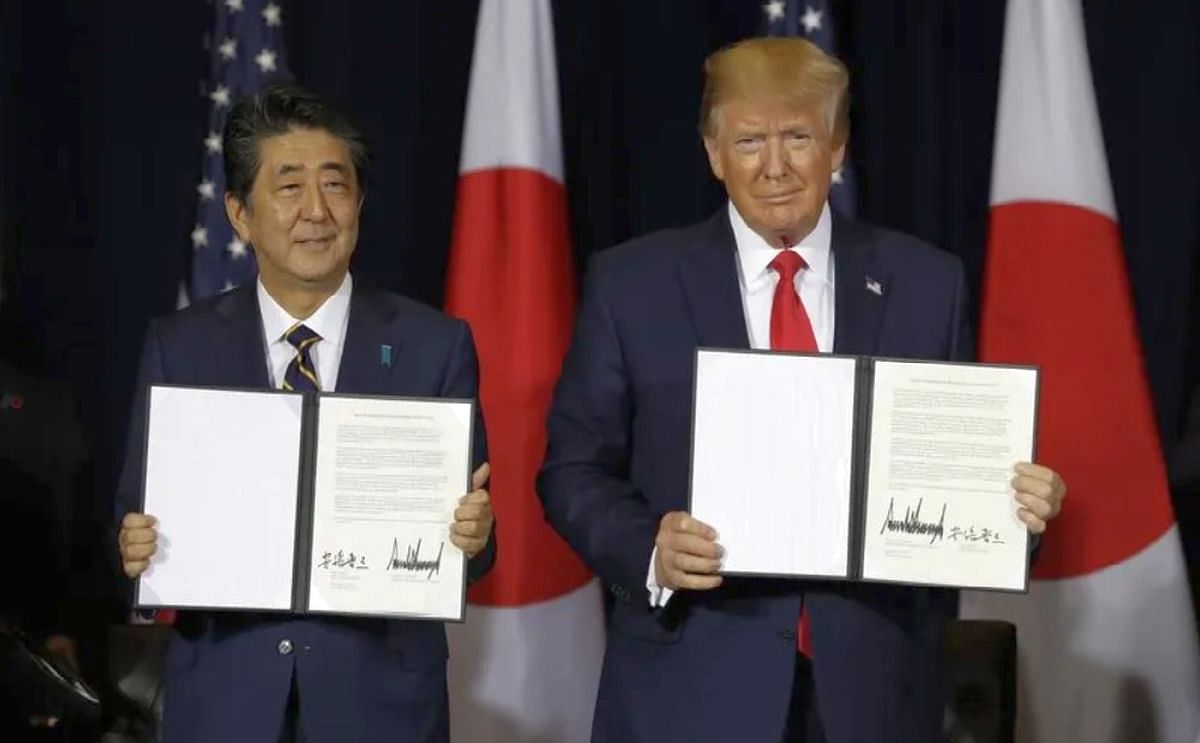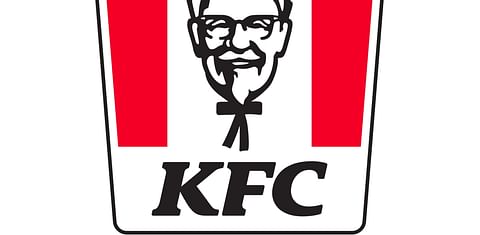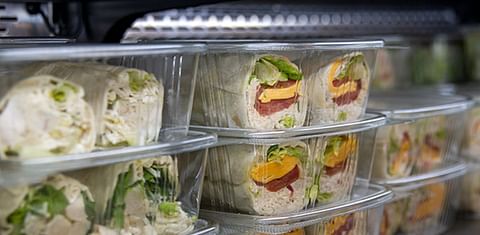US-Japan trade deal a positive for potato industry, even without inclusion of fresh
US-Japan trade deal a positive for potato industry, even without inclusion of fresh

Farmers, ranchers and many others involved in U.S. agriculture are welcoming an announcement of a mini-trade deal between the United States and Japan, a long-time, steady customer of U.S. ag products. Over the last 20 years, ag exports to Japan averaged $10.7 billion, dropped only once below $8 billion ($7.9 billion in 2005), and reached $12.9 billion in 2018.
According to the American Farm Bureau Federation, Japan is already the fourth-largest buyer of U.S. farm and ranch goods — sometimes ranking even higher — despite the average 17.3% tariff on U.S. ag products, the result of the two countries not having a free trade agreement.
Common sense dictates that if Japan’s ag tariffs were lowered, its citizens would buy more imported ag products.
Eager to be the supplying country that benefits from lower tariffs relative to its competitors, several countries have sought FTAs with Japan. The U.S. is currently on the outside of those agreements and is looking to catch up.
Over the last few years, Japan has made no secret that it preferred the U.S. join the Trans-Pacific Partnership, or the Comprehensive and Progressive Agreement for Trans-Pacific Partnership as it became known after the U.S. withdrew from the TPP in January 2017.
However, the U.S. has been resistant to this idea and instead pursued an arrangement that does not meet the comprehensive definition of a trade agreement, but that does include reductions in tariffs for U.S. agricultural products.
Japan has repeatedly stated it will not give the U.S. a stand-alone deal on agriculture that would be better than what it would have received had it remained in the TPP/CPTPP. This Market Intel explores what Japan’s tariffs on U.S. agriculture would look like if we were to simply pick up where TPP left off.
CPTPP is a free trade agreement between 11 countries in the Asia-Pacific region: Australia, Brunei, Canada, Chile, Japan, Malaysia, Mexico, New Zealand, Peru, Singapore and Vietnam. The CPTPP entered into force among the first six countries to ratify the agreement — Canada, Australia, Japan, Mexico, New Zealand and Singapore — on Dec. 30, 2018. Vietnam followed on Jan. 14, 2019.
When the agreement went into effect, the first tariff cuts occurred. However, Japan is unique in that the government’s financial year is from April 1 to March 31, which means that Japan’s tariffs were cut again on April 1, 2019, for the CPTPP members. This puts Japan in the second year of CPTPP implementation.
If the new U.S.-Japan agreement goes effect by March 31, 2020, and the U.S. were to get the same tariff treatment as CPTPP members, the tariffs on U.S. products would need to be equivalent to the second year of implementation.
If the agreement struck were to go into effect on April 1, 2020, or later, the tariffs on U.S. products would have to be equivalent to the third year of implementation in order for the U.S. to catch up to its CPTTP competitors.
Assuming the preferential trade arrangement for the U.S. goes into effect by March 31, 2020, what does that mean for specific products? For some goods, the answer is fairly straight forward. For example, beef tariffs would fall from 38.5% to 26.6%. Fresh or chilled poultry tariffs would fall from 11.9% to 7.9%.
Duck, geese and turkey meat would instantly be tariff-free, as would the majority of fresh vegetables. All nuts, except chestnuts and pecans, would enter Japan duty-free instantly.
The tariff on fresh apples would fall from 17% to 11.4%. The tariff on cherries would fall from 8.5% to 3.4%. Fresh strawberries, raspberries, peaches and melons would all enter duty-free.
For other products, the answer is a bit more complicated. For example, Japan guaranteed more access to its CPTPP dairy suppliers through a tariff-rate quota. When the U.S. was a member of the TPP, U.S. dairy exporters would have had the opportunity to compete against Australian and New Zealand dairy companies for the quota volumes.
However, in the absence of the U.S., Australian and New Zealand companies have been developing sales relationships to fill those quotas. Will Japan create separate TRQs for U.S. dairy products? A similar question exists for any product that received additional access to Japan via a TRQ, including wheat, rice and processed foods containing wheat.
Finally, will Japan offer the same reductions to its complicated Gate Price System for U.S. pork as it would have under the TPP? Had the U.S. stayed in the TPP, Japan would have immediately reduced the specific duty charged on pork cuts under the Gate Price System by 74%, dropping it from the previous maximum charge of 482 yen per kilogram to 125 yen per kilogram.
These are just a few examples, but all of the commitments Japan made under the TPP are still available on the U.S. Trade Representative’s website. Simply find the HS code of interest and look in the “Year 2” column to find the tariff rate the product would be charged if the U.S. were to catch up to its CPTPP competitors.
Reaction National Potato Council
The National Potato Council applauded the signing of an agreement on agricultural trade between the U.S. and Japan. The NPC and members of Congress urged the U.S. Trade Representative and the Trump administration to push fresh potatoes in the agreement, but that did not come to pass.
Even without fresh potatoes, Japan is the largest importer of U.S. potato products. It is believed that the market can grow by another $150 million annually if fresh potatoes were allowed by Japan.

Kam Quarles, NPC CEO
“Today’s agreement puts the U.S. potato industry back on a level playing field with foreign competitors in accessing our largest export market in terms of tariffs.”Jared Balcom, Chairman of NPC’s Trade Affairs Committee and a farmer from Pasco, Washington:
“Now we must turn to gaining Japanese market access approval for products such as fresh (table stock) potatoes and year-round access for chipping potatoes.”
“We believe today’s signing locks in tariff benefits that were previously negotiated under the Trans-Pacific Partnership Agreement. The potato industry sincerely appreciates the dedicated work of Ambassador Lighthizer, Secretary Perdue and the agricultural professionals supporting them at USTR, the Foreign Agricultural Service (FAS) and the Animal Plant Health Inspection Service (APHIS).”Top Export Markets for U.S. potato products in 2018
- Japan — $348 million
- Canada — $305 million
- Mexico — $256 million
- South Korea — $111 million
- Philippines — $97 million
- China — $96 million
- Taiwan — $78 million
- Malaysia — $59 million
- Hong Kong — $41 million
- Singapore — $40 million










